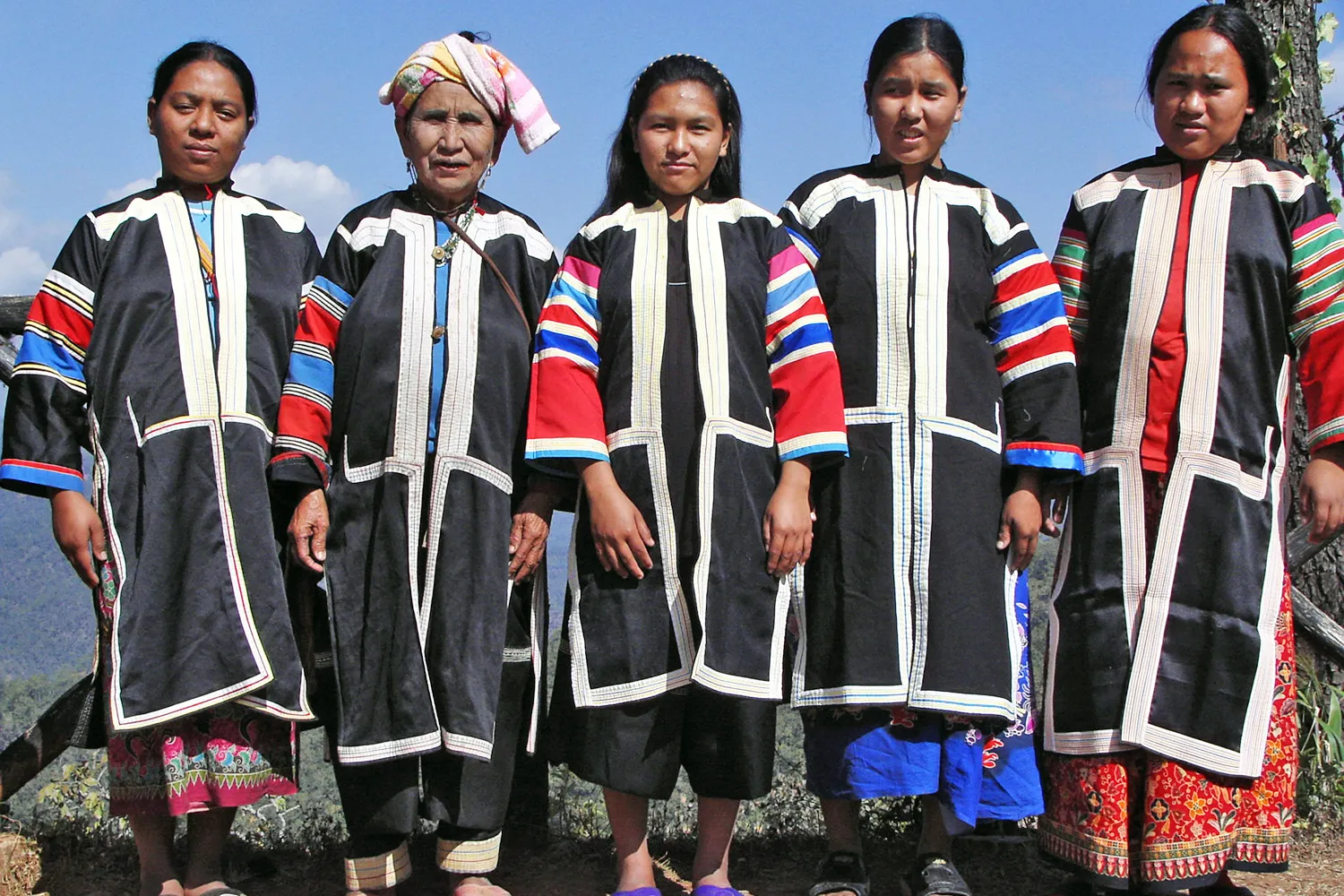The Lahu Tribe:
The Lahu Tribe, originating in Tibet, initially inhabited the southwestern regions of China before gradually migrating southward. Over the span of a century, some groups ventured into northeastern Myanmar. Subsequently, they settled in northern regions of Thailand, including Chiang Mai, Chiang Rai, Mae Hong Son, Tak, and Kamphaeng Phet provinces. Revered for their hunting skills, the Lahu people practice a blend of spirit worship and other religious beliefs. In Mae Hong Son, the Lahu Tribe ranks as the second-largest ethnic group, succeeding the Karen Tribe, and their settlements are dispersed across the province’s northern expanse. The Lahu Tribe is further subdivided into two main groups: Red Lahu and Black Lahu. Distinctions between these groups encompass clothing choices, with black and blue attire characterizing one group, while the other group adorns vibrant, elaborately designed garments. Traditional Lahu villages often occupy elevated terrains at altitudes exceeding 1,000 meters above sea level. Typically constructed from bamboo, Lahu houses feature high platforms and thatched roofs on stilts. A central living area, accessed by ladders, houses a large bedroom that may be partitioned based on family size. A central fireplace commonly graces the main room. Primarily leading simple, single-family lifestyles, the Lahu people engage in hunting, rice cultivation, corn farming, and the cultivation of various fruits and vegetables. Livestock rearing, including pigs, chickens, cows, and buffaloes, serves both ritual purposes and household consumption.
Lahu New Year Celebration.
A highlight in the Lahu calendar is the New Year Celebration, a joyous occasion following a year of arduous toil. The festivities unfold in vibrant new clothing, marked by convivial gatherings replete with feasting and revelry. The Lahu New Year typically falls between March and April, spanning 4-5 days. It encompasses distinct celebrations for males and females. Rituals to honor ancestors mark the first day, while the second day sees families sharing a special dessert, a concoction of sticky rice and sesame, with each household in the village. Subsequent days are characterized by exuberant dancing and merrymaking. Visits to neighboring villages follow, with homemade desserts and pork offerings presented to each village’s leader. These visits culminate in communal feasting, dancing, and celebration. The Lahu New Year Celebration serves as a cherished cultural event, a testament to the tribe’s rich traditions and vibrant community spirit.

